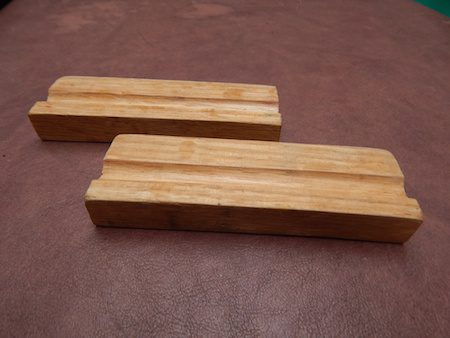
I have made many cane arrows over the years, and I wanted a multipurpose tool to assist me in that endeavor. While searching for information, I located an old photo of two sandstone blocks that were used to smooth arrow shafts. This sparked an idea for me to create the multipurpose tool that I wanted, but it had to be made of wood.
I began to make a set of wood blocks that could not only be used for sanding the arrow shafts, but also for other tasks during the manufacture of arrows. I wanted this tool to be durable, light, fit easily in my hand and be able to perform a variety of tasks during the arrow making process. So, making a set of wood blocks that were similar in size, shape, and dimensions to the sandstone blocks seemed to be the best idea. Not having the data for the original sandstone blocks, I enlarged the photograph to what I thought would be a size appropriate for my hands, cut out the enlarged photo and made a three dimensional mockup from cardboard. It worked fine as far as the size went. I wanted each half of the block to measure 5 3/4″ long by 1 1/2″ wide by 3/4″ high.
The next step was to actually make the wood blocks. I took a piece of red oak and planed it down to the size I needed (5 3/4″ x 1 1/2″ x 1 1/2″). Then I cut that piece in half lengthwise, making each block 3/4″ high. Once I had the blocks cut to size, I put them on a table router and made a groove down the length of each block. The groove, when the blocks were put together, was slightly larger than an 11/32″ wood or cane arrow shaft. I copied the off-center groove of the originals I had seen in the photograph. Making the groove slightly larger than 11/32″ allows better leverage when holding the blocks and sanding the cane or wooden arrow shaft.
Once I had the blocks to the right dimensions with the completed groove, I sanded them smooth and rounded the edges. Sanding the edges just makes holding the wooden blocks a bit more comfortable. I then put the wooden blocks to the test by sanding a cane shaft at the nodes. My invention worked perfectly!
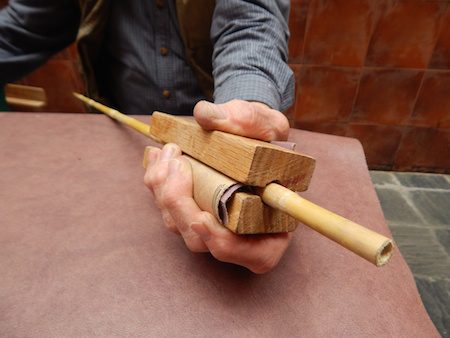
In that moment I decided to try it as another tool; I placed the blocks on the tabletop and proceeded to paint the cresting on my cane arrow shaft. This worked well as it allowed me to slowly rotate the shaft at the speed I needed while I painted the arrow shaft in the colors I like. The new wood blocks worked great as a base for cresting!
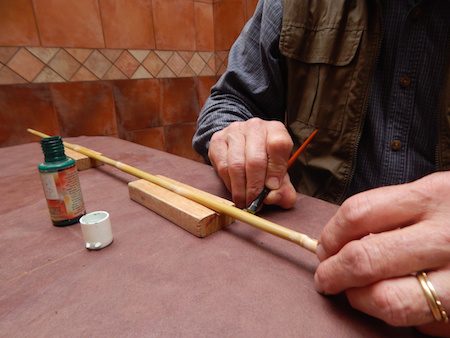
Once the paint on my cane arrow shaft was dry, I decided to try using the wood blocks as a device to hold a feather while I sanded the base. This also was a success!
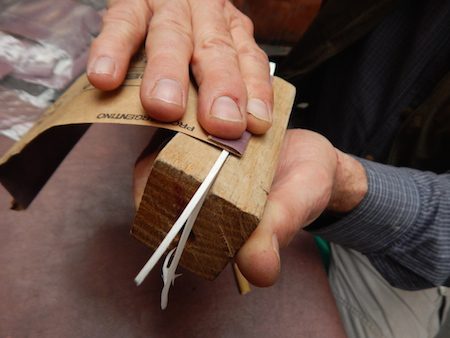
My two wooden blocks were proving their worth as a true multi-tool. Making this simple but effective multi-tool has been useful not only in the manufacture of arrows, but also in the manufacturing of wooden knife handles. It also has worked as a pair of temporary display stands. Try making this simple multi-tool yourself and see how useful it will be.





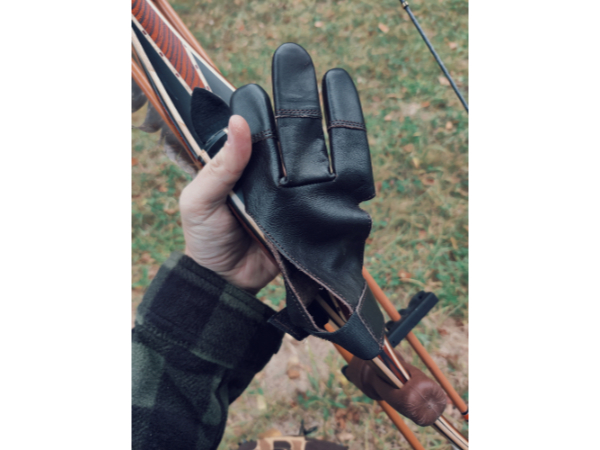

Leave A Comment